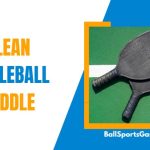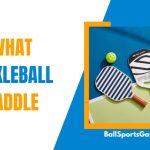You can choose from hundreds of paddles at all popular paddle brands. Many paddle brands offer hundreds of paddles, and all use the same marketing playbook to claim their paddles are the perfect combination of power and control. Because of this, it’s hard to tell which paddle is different.
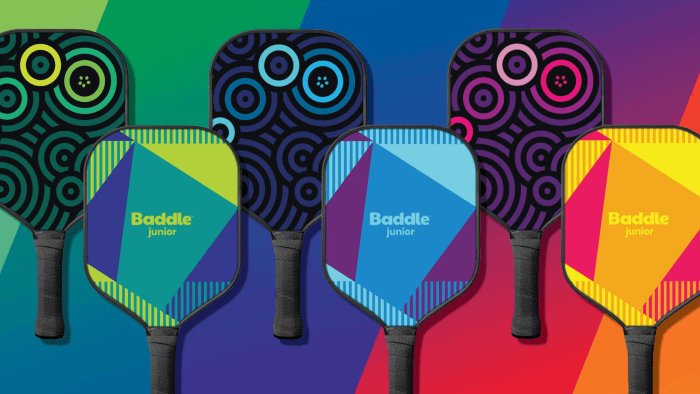
I have prepared this guide to provide you with a way of identifying the differences between paddles so that you can see past the marketing jargon and choose the paddle that’s right for you and your needs. This guide is quite in-depth, so I divided it into two parts. We will discuss in detail the selection process in section 2 and the things you should consider when selecting a paddle in section 3. I have highlighted a few simple tables illustrating on how to choose pickleball paddles considering characteristics affect performance.
Factors To Consider While Choosing Pickleball Paddles
Pickleball paddles should be selected based on these three (3) key points.
- Grip Size
- Paddle Weight
- Paddle Shape
Selecting a Grip Size
Pickleball grip sizes are measured in circumference, the distance around the grip. So, that’s how to choose pickleball paddles from these three different categories:
- Thin Grip Pickleball Paddles (3 5/8″ – 4 1/8″)
- Standard Grip Pickleball Paddles (4 1/4″ – 4 3/8″)
- Thick Grip Pickleball Paddles (4 1/2 “+)
This example shows that the smallest grip size is 358″ and the largest grip size is 412. The smaller the grip, the greater your wrist’s range of motion, resulting in more power and spin. If your grip size is correct, you should be able to place your pointer finger between your fingertips and your palm.
Your fingertips will almost touch when you hold the grip, so it’s too small. There is too much space between your fingertips and palm if you can fit more than one finger. When choosing a grip size, remember that grips can always be made larger by adding an overgrip.) If you are unsure, we recommend selecting a smaller grip.
Selecting a Paddle Weight
If you choose a pickleball paddle’s weight, you will need to consider several factors. Generally speaking, the middleweight paddle is the most popular and the best choice for the majority of players.
I would suggest that you look for a paddle that is not too heavy or too light for you, depending on the type of player you are. As for the weight, manufacturers typically produce paddles for beginners that weigh between 7 ounces and 8.5 ounces. However, both lightweight and heavyweight paddles have their advantages as well. There are varying weights available depending on the type of player you are. Manufacturers typically produce paddles that weigh between 7 ounces and 8.5 ounces on basis of how to choose pickleball paddles.
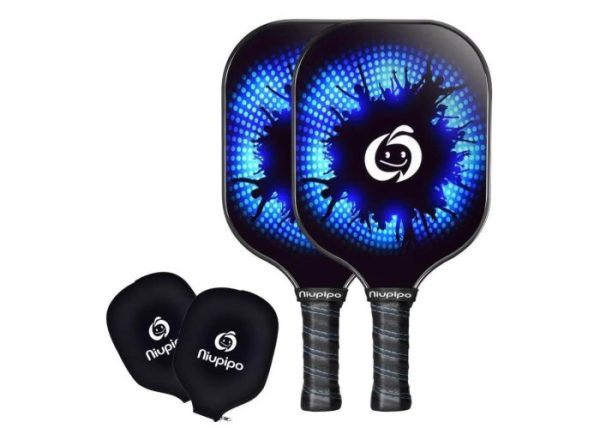
Selecting A Paddle Shape
There is a general shape of the paddle that you’ve probably seen almost exclusively, which is a square (ish) shape. Players sometimes use variations of this as well as unique paddle designs. A classic square paddle has an all-around sweet spot and can be used on any court with a medium sweet spot. Widebody paddles tend to be a little heavier than regular square paddles because of their more prominent sweet spot and broader face.
- Elongated Shapes
You can reach, power, and spin more with an elongated shape, but you will find that it has a smaller sweet spot and is less maneuverable. The elongated shape is the biggest and most extended of all shapes and measures approximately 16 inches by 7 inches in width.
- Widebody Shapes
Generally, these paddles have a wider face, around 8.5 inches and are shorter, around 15.5 inches. Due to its limited reach and power, a product such as this would be inappropriate for recreational use due to the fact that it offers the best sweet spot and high maneuverability, but at the cost of reach and power.
- Classic Shapes
There are two main shapes of paddles: elongated and widebody paddle. An elongated paddle shape is one with a variety of features that combine power, spin, forgiveness, and maneuverability in an ideal way. It varies from wide bodies to elongated paddles.
Types Of Pickleball Paddles
Light Paddles
- Playing a pure touch/feel game and preferring “dinks” versus hard shots or slams is the best choice for players who prefer control/feel/touch/feel games.
- The gain in control comes at the expense of more power and pop.
- Reduces the need for arm strength
- Hard hitters will benefit from it since it generates more head speed.
- Due to the additional energy and momentum required to swing, this is a poor choice for those with shoulder, elbow, and hand injuries or arthritis.
- Among doubles players, it is more popular.
Medium Paddles
- If you are unsure about what weight to choose, this is one option to consider
- Those who are interested in both power and finesse should choose this product.
- When it comes to beginners who have not yet figured out all of their preferences and playing styles, this is the ideal choice.
- For those with injuries to the shoulder, elbow, hand, or arthritis, this is the best choice.
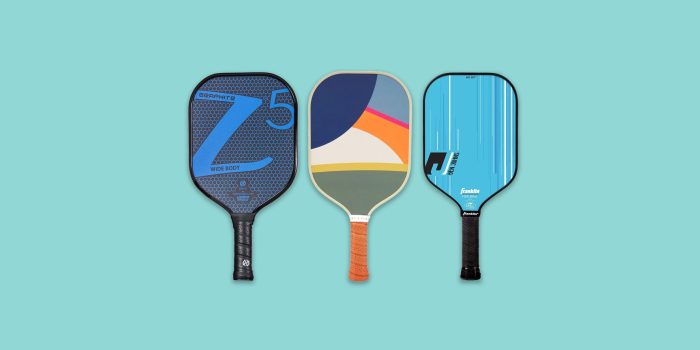
Heavy Paddles
- Ideally suited for players who prefer big shots over “dinks” or finesse shots to gain a competitive edge, they spend most of their time on the baseline.
- This results in more power and pop, but some control is lost as a result.
- This task requires more arm strength.
- This is a good choice for light hitters because it generates less head speed.
- For those with shoulder, elbow, or hand injuries or arthritis, this is not a good choice since it tires your arm faster and can aggravate your elbow.
- The most popular game for singles players
Materials Used For Paddles
Wood, composite, or graphite are the three main materials that makeup pickleball paddles. In addition to being the heaviest, wood paddles are also the least expensive. Those who are new to picking up equipment or those unsure about their purchasing decisions may be tempted to buy a wood paddle. This is fine; however, keep the weight in mind.
The composite paddle is in the middle of the price range among all types of paddles, but it comes in a wide variety of weights and sizes, while graphite paddles are the most expensive paddles but are also extremely lightweight and powerful at the same time.
You should try a few paddles and see what feels right to you and what helps your game the most while asking yourself how to choose pickleball paddles. If this is not an option, you will get a great paddle and discover what to look for in the future, so stick with a mid-weight paddle in the right grip size and made of composite material instead.
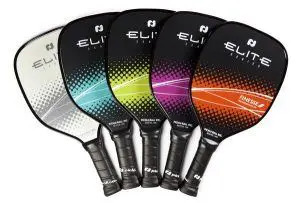
Core Materials:
- Polymer: On average, 95% of paddles have a polymer core. You will see references to polymer, polypropylene, or something similar to that. This material is a hard plastic that is used to make paddles. Consequently, the polymer is the most popular core material since it is durable, quiet, and offers a good balance between power and touch.
- Fibreglass (Composite): The most common material is fiberglass, but carbon fiber has taken over the top spot. Fiberglass offers the most power out of the three common materials. This is sometimes called composite, so you should know it is the same as fiberglass.
- Carbon Fiber: There is a slight difference between carbon fiber and fiberglass in feel, but it does not have as much power. As well as being stiff and durable, the material spreads the ball’s energy throughout the entire face and handle. Although this will provide a more natural feel, the ball will lose some power since less energy is transferred back to it.
- Graphite: Less expensive than carbon fiber, but it plays very similarly in terms of performance. My testing of paddles revealed that graphite faces produce a similar amount of power as carbon fiber faces and are also known for their better feel over fiberglass faces.
- Hybrids: Some brands combine the three materials above to produce a performance that affects the product’s performance because of the characteristics of the materials they combine.
General Pointers
- Players who like to play around the baseline and who are looking for a more powerful shot typically favor heavier paddles.
- When it comes to players who prefer control and spend a lot of time around the net with dinks and rotating, a lightweight paddle is usually the best option for them.
- Players who aren’t sure what style of play they prefer, such as those who are beginners in the sport, prefer a middleweight paddle because they like a mix of power and control.
- The Player’s experience with the paddle is primarily determined by the size and weight of the grip.
- Generally speaking, pickleball players are more attracted to middleweight paddles. It is important to note that you need to check the paddle’s feel before buying it to ensure it meets the player’s needs. As players get older, they may become more power-hitting or finesse/control players.
- You should know what kind of certification your paddle needs before you start shopping. The USAPA is the main governing body currently, but not all leagues or tournaments require this certification.
Most Asked Questions
As well as that, some players prefer to have two hands on the paddle at all times, while others prefer to keep one hand on the paddle only. Another group of players, like myself, prefer to only use one hand when they’re at the net.
For those who use two hands all the time, you’ll need at least 5.25 inches of handle length, but more may be better. If you don’t use two hands before, a standard 5-inch handle length should be sufficient. You may prefer a shorter handle if you want your finger on the paddle face, similar to a pingpong paddle.
For the kayak pickleball paddles to be approved by USA Pickleball, the length of the paddle (including the edge guard and the butt cap) of the paddle no longer exceeds 17 inches (43.18 cm), and the thickness of the paddle cannot exceed 20 mm. There is no restriction on the width of the paddle.
The average competitive player replaces his or her paddles about once a year, although some may switch even earlier if their sponsors sponsor them. A graphic or composite paddle should last about 2-3 years for recreational players. Eventually, you’ll develop dead spots on your paddle.
Conclusion
Pickleball paddles can be challenging to choose. There are so many options out there, including size, shape, materials, grips, etc., that it can be hard to figure out the differences and which paddle is right for you. With our paddle guide, you narrow down your choices based on answers to the questions how to choose pickleball paddles. You can find the paddle of your dreams in no time.

